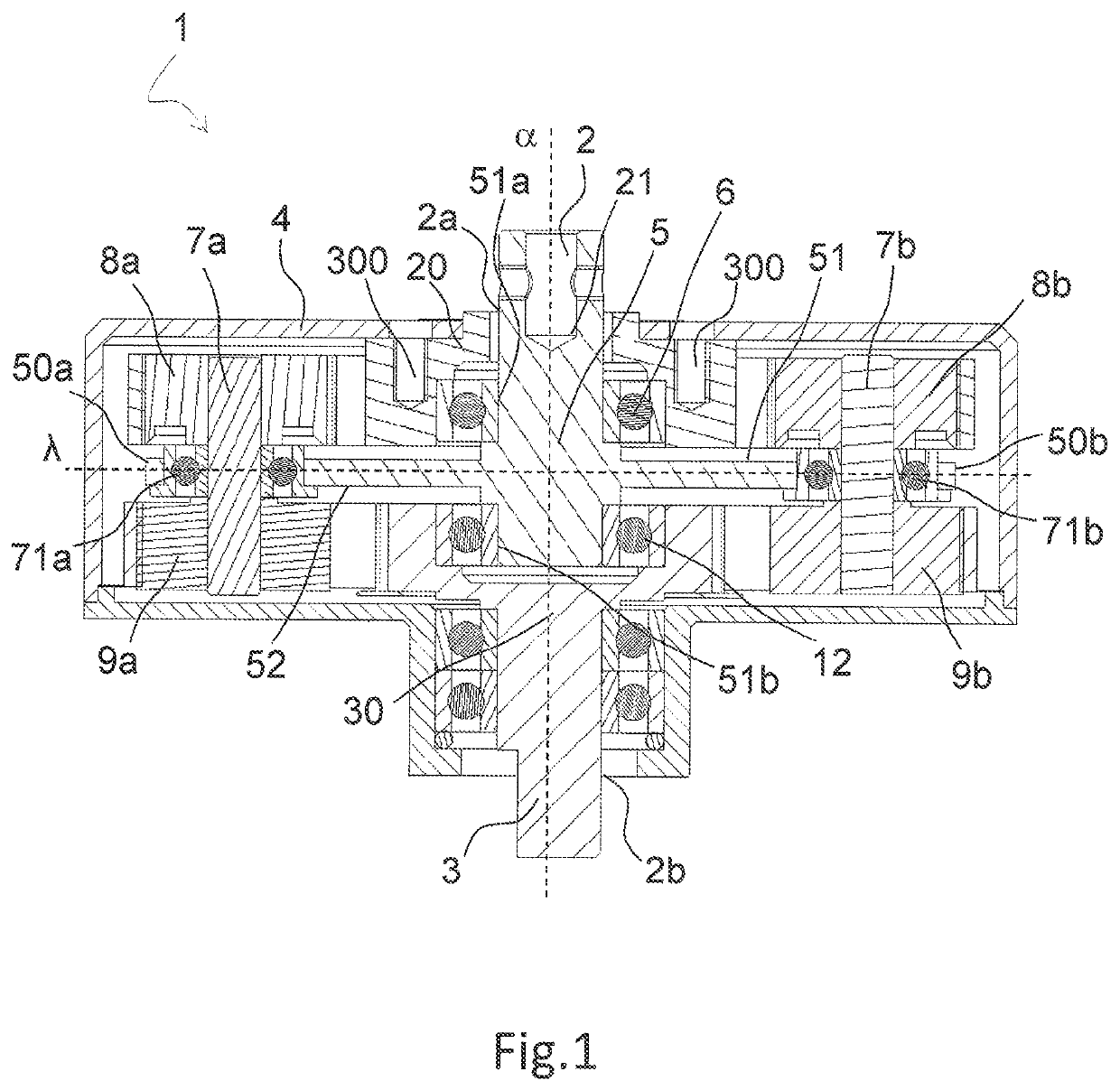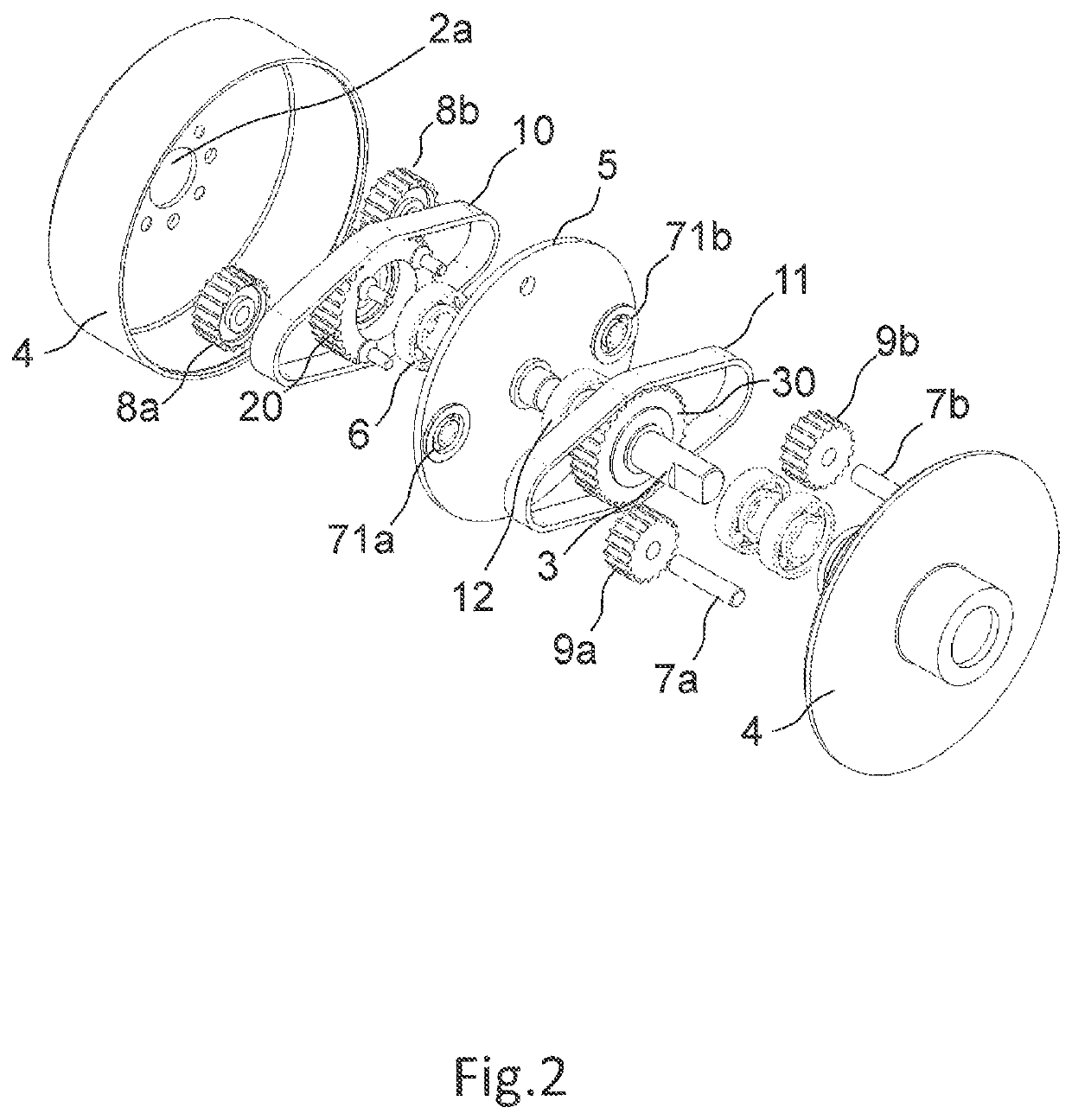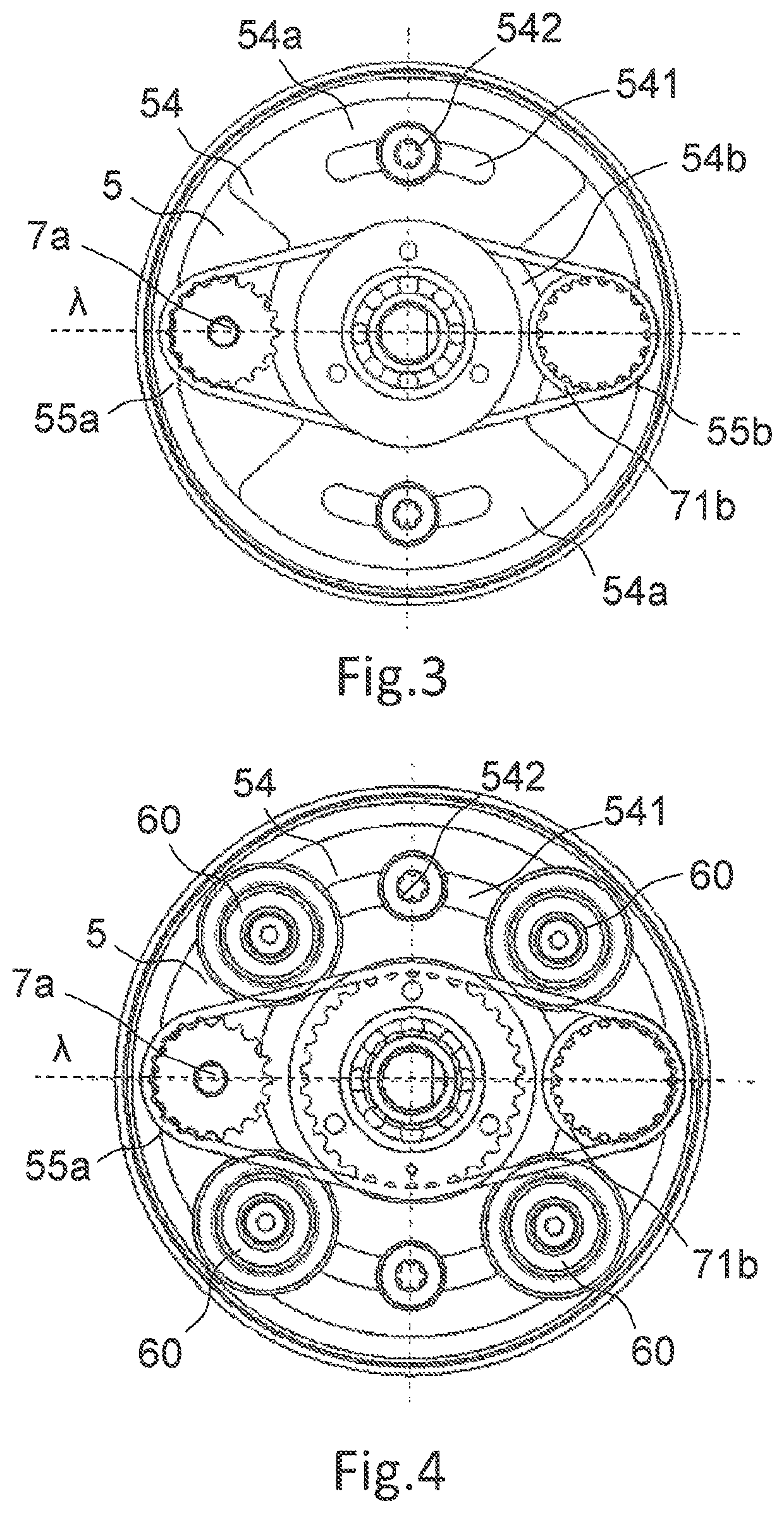Rotational speed reducer
a technology of rotational speed reducer and speed reducer, which is applied in the direction of driving belts, toothed gearings, gearings, etc., can solve the problems of mechanical power being transferred, speed reducers subject to failures, and speed reducers to be worn to a greater extent, so as to reduce the number of components used, the overall dimension of the speed reducer is reduced, and the speed reducer is more efficient
- Summary
- Abstract
- Description
- Claims
- Application Information
AI Technical Summary
Benefits of technology
Problems solved by technology
Method used
Image
Examples
Embodiment Construction
[0035]While the invention is susceptible of various modifications and alternative forms, some non-limitative embodiments, given by way of example, are described herein below in details.
[0036]It should be understood, however, that there is no intention to limit the invention to the specific embodiments disclosed, but, on the contrary, the intention of the invention is to cover all modifications, alternative constructions and equivalents falling within the scope of the invention as defined in the claims.
[0037]Therefore, in the description below, the use of “for example”, “etc”, “or” indicates non-exclusive alternatives without limitation unless otherwise defined; the use of “also” means “among which, but not limited to”, unless otherwise defined; the use of “include / comprise” means “include / comprise, but not limited to,” unless otherwise defined.
[0038]FIG. 1 is a section of a top view of an epicyclic speed reducer, denoted by reference numeral 1, to transmit a rotational motion from o...
PUM
 Login to View More
Login to View More Abstract
Description
Claims
Application Information
 Login to View More
Login to View More - R&D
- Intellectual Property
- Life Sciences
- Materials
- Tech Scout
- Unparalleled Data Quality
- Higher Quality Content
- 60% Fewer Hallucinations
Browse by: Latest US Patents, China's latest patents, Technical Efficacy Thesaurus, Application Domain, Technology Topic, Popular Technical Reports.
© 2025 PatSnap. All rights reserved.Legal|Privacy policy|Modern Slavery Act Transparency Statement|Sitemap|About US| Contact US: help@patsnap.com



